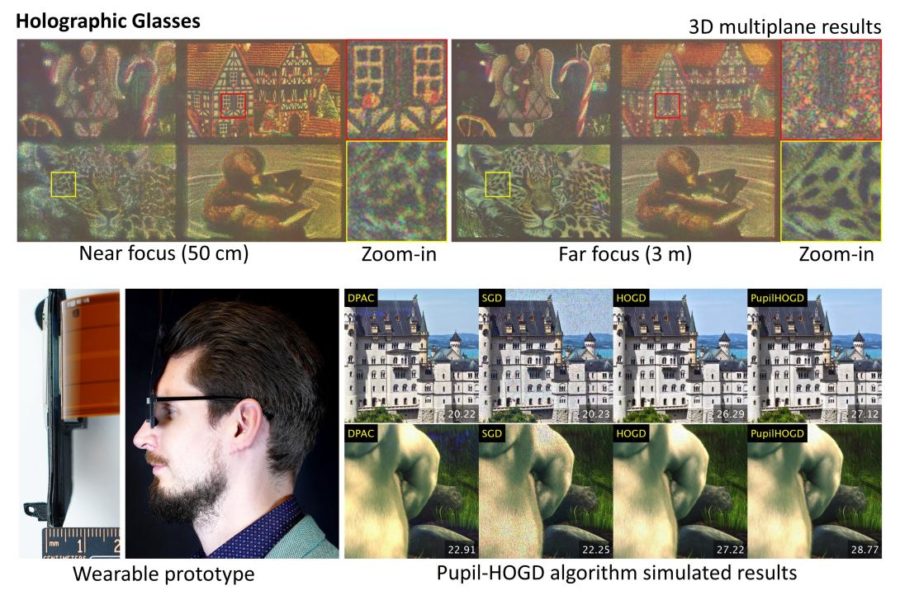
May 5, 2022 – NVIDIA has released a total of 16 research papers, along with several research projects, which will be on display at SIGGRAPH 2022, taking place August 8-11 in Vancouver, Canada, and online. The papers and projects highlight the latest academic collaborations in graphics and AI research to enable advancements in content creation, virtual reality (VR), real-time rendering and 3D simulation.
One of the projects focuses around ultra-thin holographic glasses for virtual reality. Most virtual reality users access 3D digital worlds by putting on bulky head-mounted displays, but NVIDIA states that its researchers are working on lightweight alternatives that resemble standard eyeglasses.
A collaboration between NVIDIA and Stanford researchers has packed the technology needed for 3D holographic images into a wearable display just a couple millimeters thick, according to the company. The 2.5-millimeter display is less than half the size of other thin VR displays, known as pancake lenses, which use a technique called folded optics that can only support 2D images.
NVIDIA stated that researchers accomplished this feat by approaching display quality and display size as a computational problem, and co-designing the optics with an AI-powered algorithm.

While prior VR displays require distance between a magnifying eyepiece and a display panel to create a hologram, this new design uses a spatial light modulator, a tool that can create holograms right in front of the user’s eyes, without needing this gap. Additional components — a pupil-replicating waveguide and geometric phase lens — help to further reduce the device’s bulkiness.
NVIDIA added that this is one of two VR collaborations with Stanford that will be shown at the conference, with another paper proposing a new computer-generated holography framework that improves image quality while optimizing bandwidth usage. A third paper in this field of display and perception research, co-authored with New York University and Princeton University scientists, measures how rendering quality affects the speed at which users react to on-screen information.
In all, the 16 technical papers accepted at the conference represent work with 14 universities including Dartmouth College, Stanford University, the Swiss Federal Institute of Technology Lausanne and Tel Aviv University, and span the breadth of graphics research, with advancements in neural content creation tools, display and human perception, the mathematical foundations of computer graphics and neural rendering.
For more information on NVIDIA’s research around the globe, please visit the company’s research webpage.
Image credit: NVIDIA
About the author
Sam is the Founder and Managing Editor of Auganix. With a background in research and report writing, he has been covering XR industry news for the past seven years.
